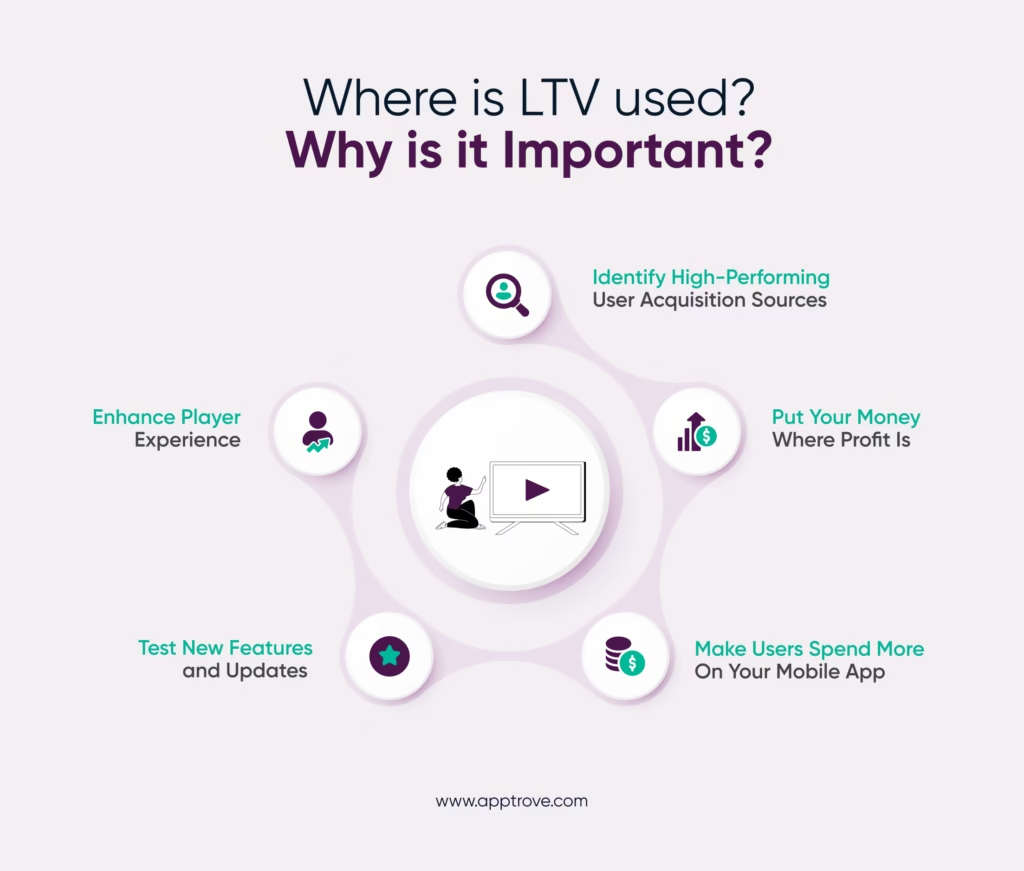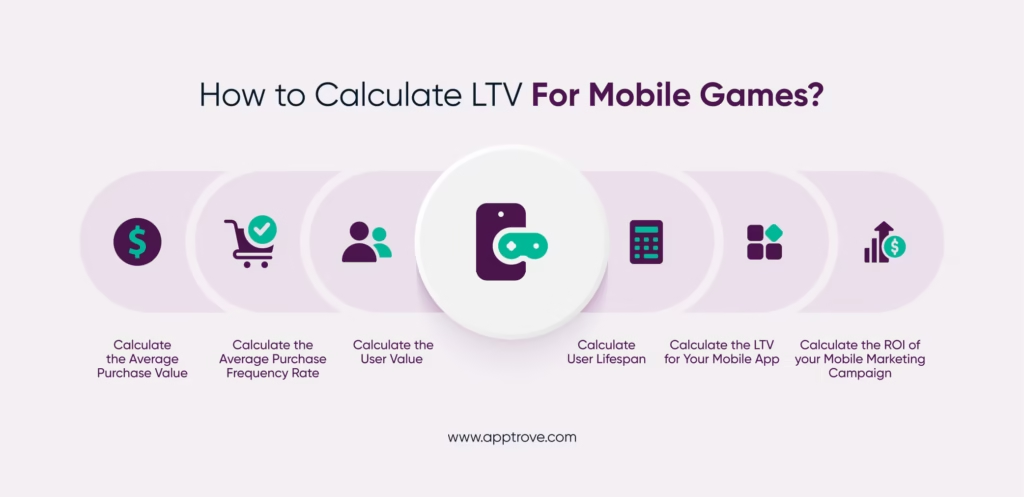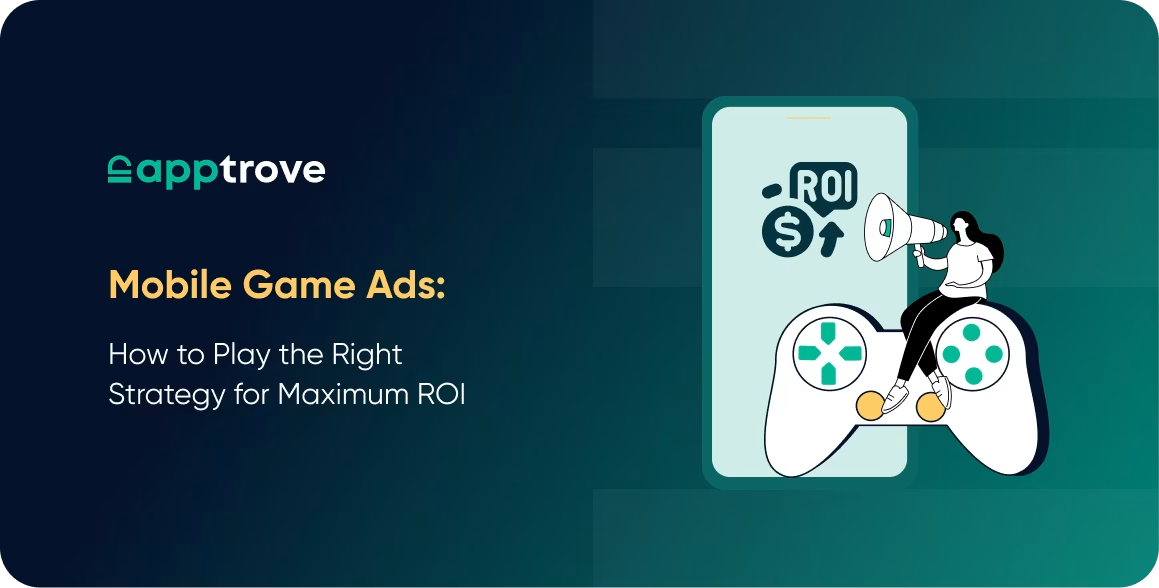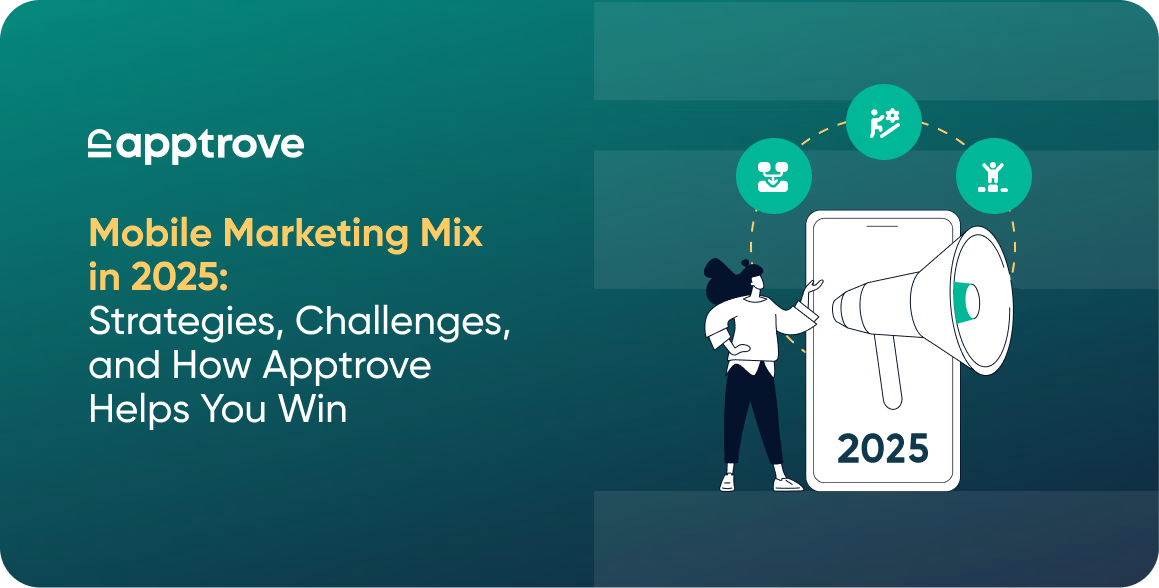Did you know that about 76% of businesses consider Customer Lifetime Value (LTV) one of the most valuable metrics? Why? Because, based on the study, your current customers spend 67% more than new customers. I don’t think I really need to explain why LTV is the most important metric for a business that wants to succeed long-term across the board, in any industry, even mobile games. Now, the focus question is how do you calculate LTV for mobile games, and what is the LTV for mobile game apps?
In this blog post, we’re going to explain both LTV and the way to find it through Apptrove, so you can have a clear picture of what value to focus on.
What Does LTV Stand for When Referring to Mobile Games?
Like in regular businesses, the general definition of Lifetime Value for mobile games considers the average money spent by users in the game, but with some small changes. This means the number of players is estimated to contribute to your earnings via your mobile gaming app. It allows mobile marketers to locate and support high-value users while shaping their marketing activities.
Nevertheless, there’s more to it. LTV has multiple advantages for mobile games, which we will talk about in the next part of this blog.
What types of companies apply LTV? Why is it Significant?
Customer value during the entire relationship holds many benefits for the mobile gaming sector, too. It helps find out how much value players bring to your game and find ways to increase it during their fun. Besides this, Customer Lifetime Value is also important in other notable parts of a mobile game app.

- Identify High-Performing User Acquisition Sources: Combine the Life Time Value (LTV) data with your user acquisition sources to find out where you get the most valuable and engaged players. You can focus your marketing on the platforms that are producing good results.
- Put Your Money Where Profit Is: Lifetime Value shows you how to make the most profit from your game app. Analyzing the Lifetime Value of various users lets you set up in-app advertisements, campaigns and offers to target the ones with the highest value and try to upsell them.
- Make Users Spend More On Your Mobile App: Again, the primary thing Customer Lifetime Value is used for is to help mobile marketers discover how to keep users from your app engaged and coming back. By doing this, businesses have an assured chance of thriving over time.
- Test New Features and Updates: Developers can see from the analysis which features and updates their users really like and which ones aren’t popular. It informs them of updates that really draw in more engagement from gamers using their app.
- Enhance Player Experience: With lifetime value analysis, you can improve the way players are targeted through personalized remarketing ads. You can pinpoint where the issues are if the Lifetime Value is low and by using a personalized approach, help them spend more as customers.
Hence, performing this Lifetime Value analysis can change your low-value players into high-value players and your high-value players into brand advocates.
How to Calculate LTV For Mobile Games?
Calculating Lifetime Value can be done very simply. Let’s talk about how to do it below step by step:

Calculate the Average Purchase Value
Firstly, you will need to calculate the average purchase value of your mobile game users. To calculate this, you simply have to divide the total revenue of your mobile game app over a specific period by the total number of purchases made in that period. A basic picture to illustrate the idea can be seen below.
Calculate the Average Purchase Frequency Rate
Now, calculate the Average Purchase Frequency Rate – the measure of how frequently customers make purchases on your mobile game app in a specific period.
To calculate this, divide the number of purchases made by users on your mobile app in a specific period by the number of unique users who purchased your mobile app.
Calculate the User Value
The next step of the process is to calculate the User Value of your mobile game app. You do this by multiple the Average Purchase Value from the previous step by the Average Purchase Frequency Rate.
Calculate User Lifespan
You can find this by dividing the time users spent in your app by the total count of your users.
Calculate LTV for Your Mobile App
The next and final step of the process is to calculate LTV for your mobile game app. this requires your user value to be multiplied by the length of time your users are expected to remain active. An iPad will give you a meaning that shows your Customer Lifetime Value.
Using a Mobile Measurement Partner like Apptrove, you can easily find out the Cost Per Install of your mobile app, which will further help you calculate the ROI of your mobile marketing efforts.
Calculate the ROI of your Mobile Marketing Campaign
To calculate the ROI (Return on Investment) of your mobile marketing campaign, divide the Lifetime Value obtained above by the Cost Per Install. If the ratio is greater than 1, then your mobile marketing campaigns are yielding positive results. However, if less, you’re doing something wrong or burning out too much cash on acquiring users that are not high-value.
Average LTV for Mobile Games
It is clear from the data that mobile game LTV depends on the game genre and changes a lot based on how the market is doing. Here’s an estimate of what the Average Lifetime Value is for different genres of Mobile Games.
- Hypercasual Game: 20-40 cents
- Casual Game: $1-$3
- Mid-Core Games: $2-$5
- Casino Games: ~$15
The rule most marketers follow is, your Lifetime Value should be three times higher than your cost to acquire a customer. If the cost is too high, work on getting users more efficiently and economically to bring down the costs and increase returns.
What To Do if Your LTV for Mobile Game Is Low or Less Than CAC?
When the lifetime value of users is below the cost of getting them, it is clear that either your user acquisition plays a big role in your expenses or marketing to keep users is not productive. Should you discover that customers have little interest in your mobile app and rarely buy from you, you should design a stellar retention marketing approach to interest customers, boost their engagement and earn their loyalty.
If retention marketing is new to you or you want some new ideas, we have an article you will enjoy. Our last post showed you how to set up retention marketing so your Lifetime Value increases at a reasonable expense.
FAQs
1. Why is Customer Lifetime Value (LTV) so important for mobile games?
LTV helps mobile game developers understand how much revenue a player brings over their entire time with the game. Since current players spend 67% more than new users, knowing your LTV in mobile games helps you invest wisely in retention, user acquisition, and monetization strategies to maximize long-term growth. Pairing it with the mobile games retention rate formula gives a clearer picture of how long players are likely to stay and spend.
2. How do you calculate LTV for mobile games?
The LTV formula combines:
– Average Purchase Value
– Average Purchase Frequency
– User Value
– User Lifespan
The result is the estimated revenue a single player generates. With tools like Apptrove, you can also connect LTV with acquisition costs (CPI) to evaluate ROI and optimize campaigns. Including the mobile games retention rate formula in this calculation ensures a more accurate estimate of player longevity and profitability.
3. What should you do if your LTV is lower than your CAC?
If LTV mobile games is less than CAC, your marketing is not sustainable. In this case, focus on:
1. Retention marketing (re-engagement campaigns, push notifications, in-game rewards).
2. Improving monetization (ads, in-app purchases, premium features).
3. Optimizing acquisition sources to cut costs and attract higher-value players.
By also tracking the mobile games retention rate formula, you can see whether your players are leaving too quickly and adjust your strategies accordingly.
4. How can Apptrove help improve LTV for mobile games?
Apptrove empowers mobile game marketers by:
1. Tracking user behavior across campaigns and channels.
2. Measuring ROI accurately with Cost Per Install (CPI) and retention data.
3. Identifying high-value cohorts with advanced audience segmentation.
4. Boosting retention with deep linking and contextual engagement tools.
5. Protecting ad spend through anti-fraud mechanisms.
By combining LTV mobile games insights with the mobile games retention rate formula, Apptrove gives developers actionable intelligence to scale smarter, boost retention, and maximize long-term profits.






